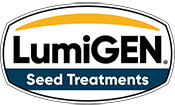Seed and Seedling Diseases of Corn
Crop Insights
Written by Mark Jeschke, Ph.D., Pioneer Agronomy Manager
Crop Insights
Written by Mark Jeschke, Ph.D., Pioneer Agronomy Manager



The foregoing is provided for informational use only. Please contact your Pioneer sales professional for information and suggestions specific to your operation. 2020-2022 data are based on average of all comparisons made in over 50 locations through Sept. 1, 2022. Multi-year and multi-location is a better predictor of future performance. Do not use these or any other data from a limited number of trials as a significant factor in product selection. Product responses are variable and subject to a variety of environmental, disease, and pest pressures. Individual results may vary.
Pioneer® brand products are provided subject to the terms and conditions of purchase which are part of the labeling and purchase documents.